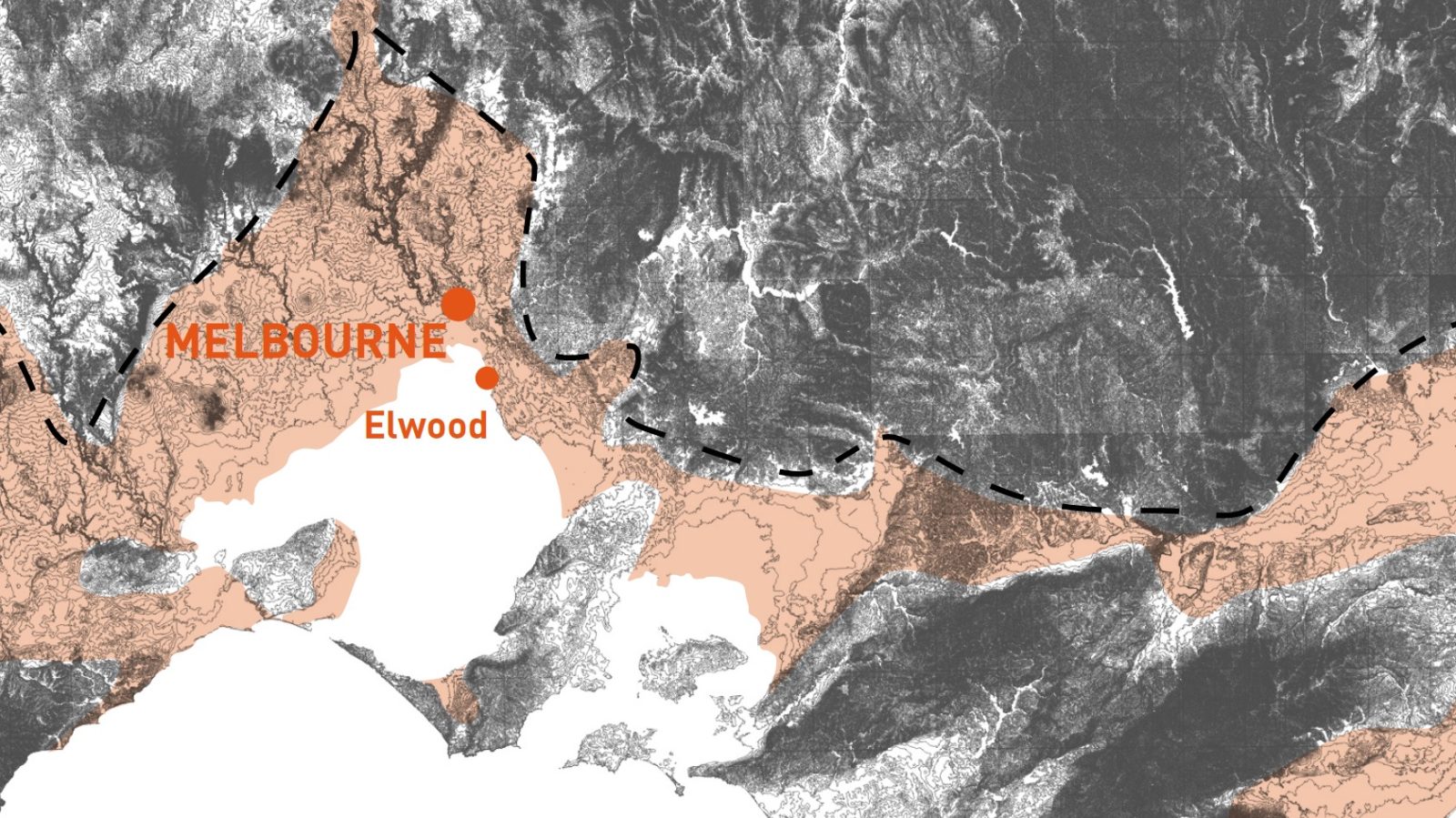Bouncing forward: flood resilience vital in truly Water Sensitive Cities
It’s difficult to get more Australian than Dorothea Mackellar’s early 20th century poem My Country: “I love a sunburnt country, a land of sweeping plains, of ragged mountain ranges, of droughts and flooding rains.” But as our cities continue to grow, and as they become increasingly impacted by extreme weather events caused by climate change, it’s those flooding rains that are going to have more defining impacts on Australian communities in the future.
The 2010–11 floods in Queensland caused the tragic deaths of 35 people and billions of dollars worth of damage to local infrastructure and businesses. More recently, flooding in Brisbane caused by Cyclone Debbie resulted in additional damage and, sadly, more loss of life. These recurring floods have not gone unnoticed by researchers and partners of the Cooperative Research Centre for Water Sensitive Cities (CRCWSC). In response, the concept of flood resilience has emerged as a leading strategy to future-proof our cities – because without addressing flood resilience, it’s impossible to create a Water Sensitive City.

What is flood resilience?
In a nutshell, flood resilience is about adaptive planning. In an uncertain future, how can we build our roads, parks, buildings, and other urban structures to best manage a wide range of possible circumstances? It’s the opposite of a “one size fits all” approach and relies on sharing local knowledge to build environments that are not only better able to cope with future flooding, but actually add value as they grow and evolve. With its overseas partners, the CRCSWC is channelling such ideas into the Australian context to show how they might be implemented here.

Overseas expertise
Professor Richard Ashley is Emeritus Professor of Urban Water at the University of Sheffield and a flood resilience expert with the Netherlands-based UNESCO IHE Delft Flood Resilience Group. Last year he co-authored a CRCWSC guide to adaptive flood planning called Appropriate Flood Adaptation: adapting in the right way, in the right place and at the right time. Having studied adaptive flooding projects around the world, including the UK, Japan, and the Netherlands, he’s interested in how planning authorities and other stakeholders can work together to build urban environments that “bounce forward” from flood events. “What you want is a system that bounces forward, not back,” he says. “It’s actually more able to cope with flooding in the future. That’s what we mean by resilience.”

That’s not to say traditional flood-proofing measures disappear. Rather, planning innovation also comes into play. An example from Japan: Professor Ashley says new “super levees” are being partly financed by developers who, in return, are allowed to build apartments on top of them. The idea is to create multi-functioning systems that can be used for other things as well as managing flooding. “One way might be to build a green route. So you could have a green corridor through your urban area, which is mostly for ecosystems services. But when there's a lot of water on the surface you can direct it through that green route to minimise the damage.”
But the best example of this new way of thinking about flood management, he says, is the Third Delta Program currently underway in the Netherlands. The Dutch are annually spending €1 billion on a three-tier approach:
- Protect (using traditional systems and building on existing infrastructure)
- Avoid (build new urban areas in ways that minimise flood risk)
- Plan (have a plan for evacuating the population to minimise risk of injury).
“And then on top of that you've got your recovery systems,” says Professor Ashley. “So that underlies what they're doing – it’s very much a learn-by-doing process.”

What about Australia?
This idea of learn-by-doing is also the best way to build flood resilience into the Australian context, Professor Ashley says. In Appropriate Flood Adaptation the idea is called “mainstreaming”. “Mainstreaming is about how you piggyback adaptation onto things that you’re doing anyway,” says Professor Ashley, explaining how, for example, if you were to renovate a highway you might climate-proof the area the road is running through at the same time.
However, the difficulty is not just in finding the extra money but securing the cooperation of the various stakeholders and authorities. “You’ve got to have an authority willing to take risks because these are risk projects. When you ask Rotterdam if they’ve done the computer modelling around these projects they say, ‘No, we haven’t. We just believe every project is going to add benefit.’”
Meanwhile in flood-prone Elwood – an old, inner-Melbourne bay-side suburb built on a former swamp – faces including Dr Nigel Bertram, Monash University Practice Professor of Architecture, have proposed a series of strategies that would bring together a number of different authorities. For an exhibition called Swamped, held in St Kilda Town Hall earlier this year, Dr Bertram and Monash Architecture postgraduate students collaborated with CRCWSC researchers and members of the community. They speculated collectively on what the suburb might look like in a future dominated by climate change, rising sea levels, and increasing urbanisation in the surrounding catchment. “Flooding has always been a part of Elwood’s situation,” says Dr Bertram. “Being a former wetland, we would expect water to be there – not all the time, but sometimes. It’s part of its natural state. Historically, we’ve attempted to engineer that water out, but with pressure from more intense rainfall and higher population and building density in upper catchments, the flooding is only going to get more frequent.”

By engaging with residents and with experts from a range of disciplines, innovative design ideas emerged around flood resilience. For example, the suburb has many “walk-up” two-to-three-storey flats. Those sturdy enough, structurally, could have extra apartments built on top, in exchange for ground levels being converted into communal spaces for workshops, plant nurseries, or water storage. Another idea considered Elster Creek, a tributary of Melbourne’s Port Phillip Bay that floods regularly but is nevertheless loved by locals. Dr Bertram painted a picture of how the creek could be re-imagined as a green corridor that, at times of extreme wet, overflows into parkland and even into designated flood zones of neighbourhood schools. “The community were quite interested in the potential for the primary and secondary schools to not only be involved in helping to make the suburb more water resilient resilience, but also to improve awareness and have a whole curriculum around this. This focus on water is already very much part of Elwood’s identity, so it’s a natural progression for the community to embrace integrated water solutions.”
One of the major challenges, says Dr Bertram, is enabling residents to act together effectively to bring about change on the ground. Indeed, another Swamped strategy focused on ways for existing structures to form new cooperative groupings – such as adjacent apartment blocks, rows of houses, or whole streets becoming “water body corporates”, as he coins them. By doing so, locals could make their neighbourhoods more dynamically flood resilient in ways that “top down” approaches from local municipal authorities might find more difficult. “It needs to be a multi-pronged approach. Most people that we talk to in this area would agree that there’s no one answer.” A major emphasis is that government has to get involved at federal, state, and local levels, as do residents – in groups and as individuals. “If all those scales are aware, informed, and able to work together there might be a way to adapt positively. But just waiting for someone else to do it and expecting either an expert or a big government agency to come in and engineer the problem away is frustrating on all sides. When multiple parties get involved there is also the opportunity to address the enormous capital costs involved to make solutions more realistic.”
Peter Barrett for the Mind Your Way team